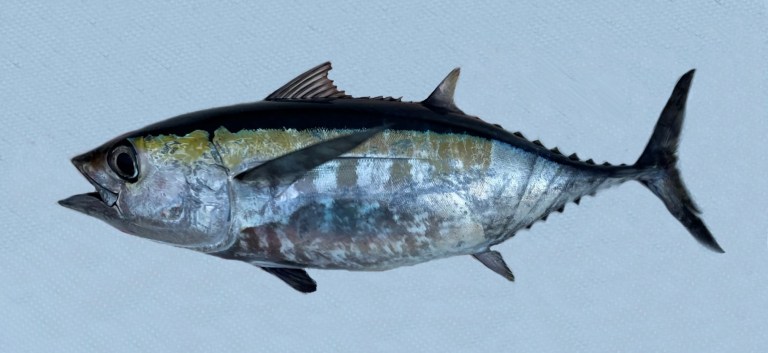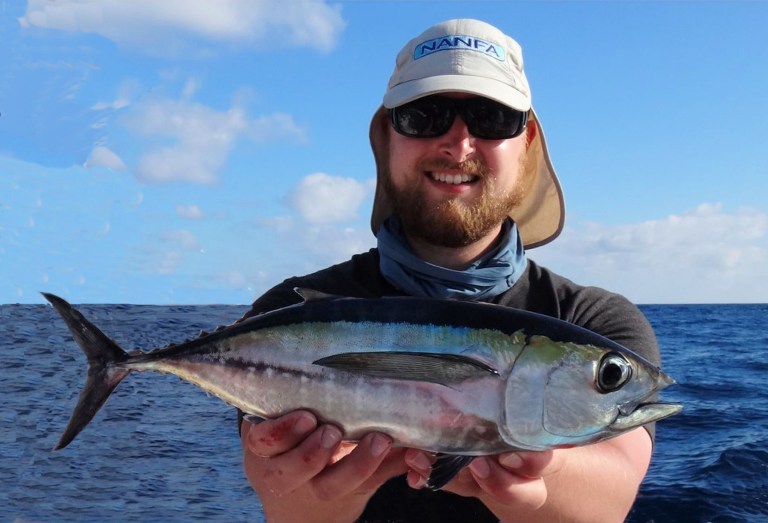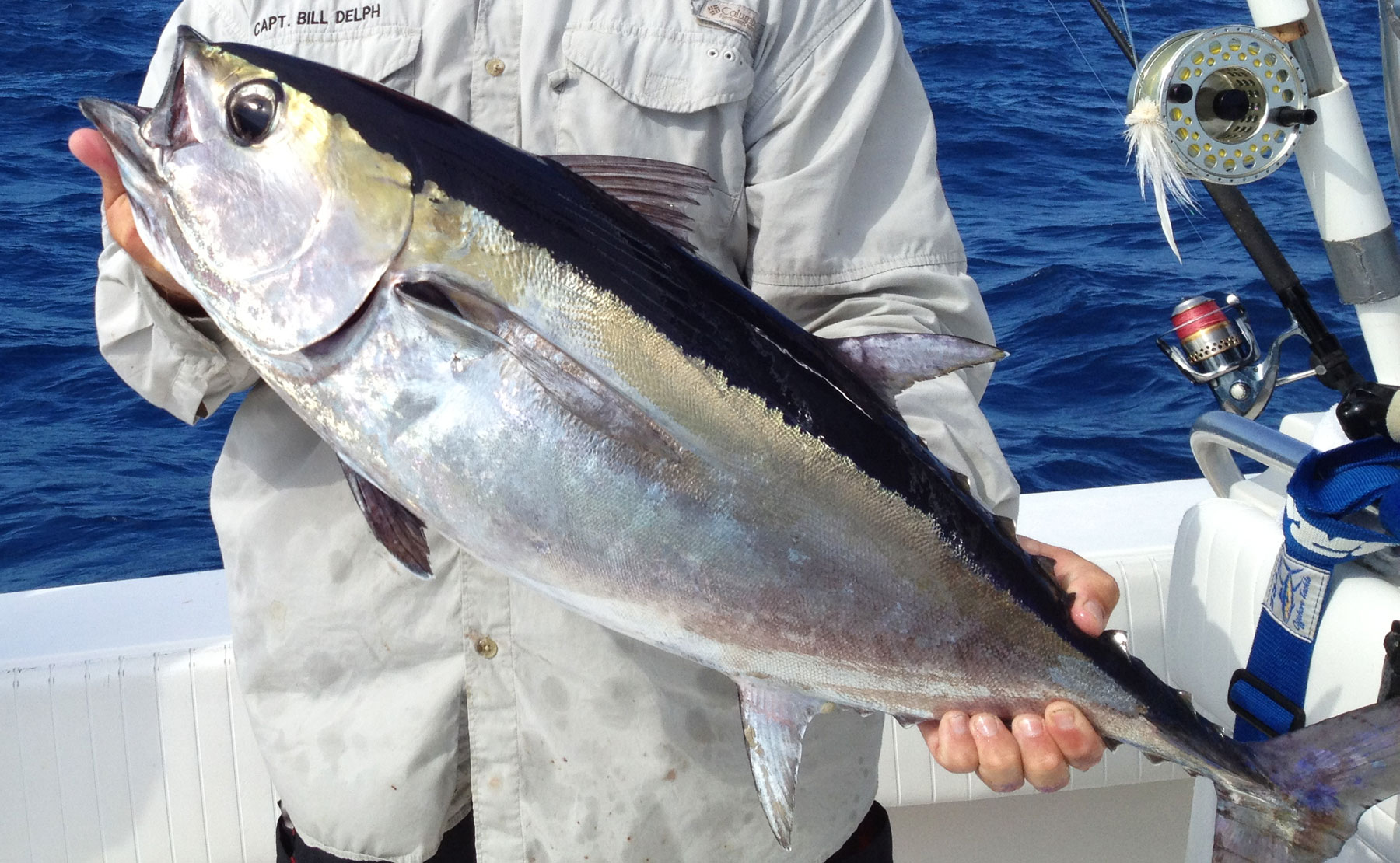Everything You Need to Know About Blackfin Tuna
Blackfin tuna, known for their impressive speed and strength, are highly sought after both as a game fish and a delicacy. Thriving in warm and tropical waters worldwide, blackfin tuna captivate the attention of fishing enthusiasts and food enthusiasts alike.
In this comprehensive article, I will explore the various aspects of blackfin tuna, ranging from their scientific classification to their physical characteristics and habitat nutritional value, fishing techniques, culinary delights and even their ecological importance and more.
Read further if you want to learn more about Blackfin Tuna!
Understanding Blackfin Tuna
Blackfin Tuna, scientifically known as Thunnus atlanticus, are remarkable creatures that inhabit the world’s oceans, captivating researchers and fishing enthusiasts alike. This section will delve deeper into their description, appearance, distribution, habitat, life cycle, and reproduction.
Description and Appearance
Blackfin Tuna are visually striking with their streamlined bodies and distinct colouration. They possess a fusiform shape, characterized by a slender and elongated body that allows them to move swiftly through the water.
The name “Blackfin” is derived from the distinguishing feature of their dark-coloured dorsal and anal fins. These fins, along with their pectoral fins, are relatively small compared to other tuna species.
The upper body of Blackfin Tuna is a deep blue or metallic black, while the lower body fades into a silver or white shade. Additionally, they have a series of thin horizontal lines running along their sides, commonly known as “worm tracks.” These lines are more visible when the fish is in its natural habitat.
Distribution and Habitat
Blackfin Tuna have a wide distribution across warm waters, including the Atlantic Ocean, the Gulf of Mexico, the Caribbean Sea, and parts of the Mediterranean Sea.
They are most commonly found in tropical and subtropical regions, where the water temperature ranges from 68°F to 82°F (20°C to 28°C). Within these regions, they exhibit distinct seasonal migration patterns, moving closer to shore during the warmer months and venturing farther offshore during cooler periods.
These tuna favour areas with abundant food sources, such as offshore reefs, weed lines, and current eddies. They are known to associate with floating objects, including logs, seaweed mats, and even offshore platforms, as these structures attract baitfish and other prey species.
The Lifespan of Blackfin Tuna
Blackfin tuna can live for up to 10 years. However, most blackfin tuna are caught before reaching this maximum lifespan due to their desirability among anglers and consumers.
Life Cycle and Reproduction

The life cycle of Blackfin Tuna involves several stages, starting with the spawning of eggs. Spawning typically occurs in warm oceanic waters, where female Blackfin Tuna release a vast number of buoyant eggs into the water column. These eggs hatch into larvae within a couple of days.
Larval Stage
During the larval stage, the tiny fish feed on plankton and undergo rapid growth. As they mature, they develop the distinctive features that make them recognizable as Blackfin Tuna. After reaching a certain size, usually around 4 to 6 inches (10 to 15 cm), they transform into juveniles and begin their migration patterns, moving towards more productive feeding grounds.
Juveniles
As juveniles, Blackfin Tuna continue to grow and feed voraciously, primarily on small fish and squid. Their diet plays a crucial role in their development and overall health. With proper nourishment, they reach sexual maturity at around two years of age, though this can vary depending on various factors such as food availability and environmental conditions.
Matured
Once mature, Blackfin Tuna engage in the reproductive cycle. The exact details of their spawning behaviour and locations are not yet fully understood, as they occur far offshore and are challenging to observe directly.
However, it is believed that female Blackfin Tuna release their eggs near the surface, where they are fertilized by the males.
Overall, the life cycle and reproduction of Blackfin Tuna contribute to their population dynamics and the sustainability of their species. Understanding these processes is crucial for effective fisheries management and conservation efforts.
Scientific Name and Classifications
Scientific Name
The scientific name for blackfin tuna is Thunnus atlanticus.
Classifications
Blackfin tuna are classified as follows:
- Phylum: Chordata
- Class: Actinopterygii
- Order: Perciformes
- Family: Scombridae
- Genus: Thunnus
- Species: T. atlanticus
Blackfin tuna belong to the family Scombridae, which also includes mackerel, albacore, and skipjack tuna.
The Average Size and Weight: How Big Blackfin Tuna Grow

Blackfin tuna possess remarkable size potential. On average, these impressive fish measure between 2 and 3 feet in length and weigh approximately 20 to 40 pounds. However, noteworthy exceptions exist, with some blackfin tuna specimens surpassing 5 feet in length and tipping the scales at over 100 pounds.
How to Fish Blackfin Tuna: Offshore Fishing or Boat Fishing?
When it comes to blackfin tuna fishing, the offshore environment reigns supreme. These fish thrive in open waters, making offshore fishing the preferred method for targeting them.
Anglers employ various techniques, including trolling, jigging, and live baiting, to entice blackfin tuna. Trolling entails dragging a baited line behind a boat, jigging involves vertically moving a baited lure in the water, and live baiting utilizes a live baitfish to attract these prized fish.
Best Method to Fish Blackfin Tuna
Determining the optimal fishing method for blackfin tuna largely depends on the specific location and time of year.
Generally, trolling proves fruitful when targeting blackfin tuna in expansive bodies of water, whereas jigging tends to be more effective when fishing closer to shore.
In areas abundant with baitfish, live baiting can yield excellent results by leveraging the natural feeding habits of blackfin tuna.
Best Time to Fish Blackfin Tuna
The summer months provide the most favourable conditions for catching blackfin tuna. Thriving in warmer waters, these fish become more active and accessible during this season.
However, in certain regions, it can be caught year-round, extending the fishing opportunities to a broader time frame.
What does Blackfin Tuna Eat?
Blackfin tuna, as predatory creatures, exhibit a diverse palate. They consume an assortment of fish, including mackerel, squid, and other tuna species. Additionally, these voracious eaters don’t shy away from smaller crustaceans and jellyfish.
Predators of Blackfin Tuna
While blackfin tuna are formidable hunters themselves, they also fall prey to larger marine creatures. Sharks, dolphins, and other apex predators perceive blackfin tuna as a delectable meal option within the marine food chain.
The Economics of Blackfin Tuna: Expensive or Cheap?
The price range of blackfin tuna can vary significantly, influenced by several factors. Firstly, the demand for blackfin tuna as a popular food fish contributes to its potential for higher prices.
Moreover, the limited supply of Thunnus atlanticus, relative to other fish species, further drives up its market value. Transportation costs also play a role, as blackfin tuna are typically caught in warm and tropical waters, necessitating their transport to different parts of the world.
Additionally, seasonal availability impacts pricing, as the abundance of Thunnus atlanticus during the summer months may make it more expensive during other times of the year.
Furthermore, size serves as an indicator of price, with larger Thunnus atlanticus commanding a higher value. Finally, the quality of blackfin tuna, influenced by factors such as catching and processing methods, plays a significant role in determining its market price.
Behavioural Traits: Are Blackfin Tunas Calm or Aggressive?
Blackfin tuna possess a reputation for their aggressive behaviour. Renowned for their exceptional speed and immense strength, they pose a formidable challenge to those seeking to capture them. However, it’s worth noting that blackfin tuna can exhibit calm and docile behaviour, particularly when they do not feel threatened.
Culinary Delights: Cooking and Enjoying Blackfin Tuna

Blackfin Tuna not only capture the attention of anglers but also tantalize taste buds with their exceptional flavour and culinary versatility.
The firm and flavorful flesh of Blackfin Tuna make it a sought-after ingredient in various cuisines around the world. In this section, we will explore the flavour and culinary applications of Blackfin Tuna, provide some delectable recipes, and highlight its health benefits and nutritional value.
Flavour and Culinary Applications
Blackfin Tuna possesses a rich and distinct flavour that sets it apart from other tuna species. Its flesh is deep red or pink, indicating a high-fat content, which contributes to its exquisite taste and succulent texture. The flavour profile of Thunnus atlanticus is often described as mild, buttery, and slightly sweet, with a hint of umami.
The versatility of Blackfin Tuna lends itself well to a wide range of culinary applications. One of the most popular ways to enjoy its freshness is in sushi and sashimi preparations. The delicate flavour and tender texture make it a perfect choice for raw consumption, allowing the natural flavours of the fish to shine.
Thunnus atlanticus can also be enjoyed cooked. Grilling is a popular method that imparts a smoky char to the fish while retaining its moistness and tenderness. The firm flesh of Blackfin Tuna holds up well to high heat, making it an excellent choice for kebabs, steaks, or even whole fish preparations.
In addition to grilling, Blackfin Tuna can be seared to perfection. This technique involves quickly searing the fish on high heat to create a flavorful crust while keeping the interior rare or medium rare. Seared Blackfin Tuna pairs well with a variety of sauces and marinades, including soy-ginger, citrus-infused, or wasabi-based dressings.
Nutritional Facts of Blackfin Tuna
Blackfin tuna is a good source of protein, omega-3 fatty acids, and other nutrients. A 3-ounce serving of Thunnus atlanticus contains the following nutrients:
:max_bytes(150000):strip_icc()/tuna_annotated1-c1a8a08c5be445ef9329d33e5315f84f.jpg)
- Calories: 140
- Protein: 27 grams
- Fat: 4 grams
- Saturated fat: 1 gram
- Cholesterol: 60 milligrams
- Sodium: 40 milligrams
- Carbohydrates: 0 grams
- Fibre: 0 grams
- Sugar: 0 grams
- Vitamin A: 10% of the Daily Value (DV)
- Vitamin C: 10% of the DV
- Vitamin D: 15% of the DV
- Potassium: 10% of the DV
- Magnesium: 10% of the DV
- Manganese: 15% of the DV
- Selenium: 100% of the DV
Benefits of Eating Blackfin Tuna
Blackfin tuna is a healthy and delicious fish that can be enjoyed in a variety of ways. It is a good source of protein, omega-3 fatty acids, and other nutrients.
Some of the benefits of eating blackfin tuna include:
- Improved heart health: Omega-3 fatty acids in blackfin tuna can help to lower blood pressure and reduce the risk of heart disease.
- Improved brain health: Omega-3 fatty acids can also help to improve brain function and reduce the risk of cognitive decline.
- Reduced inflammation: Omega-3 fatty acids can help to reduce inflammation throughout the body.
- Improved vision: Omega-3 fatty acids can help to improve vision and reduce the risk of age-related macular degeneration.
- Weight loss: Blackfin tuna is a lean protein that can help you to feel full and satisfied after eating.
Blackfin Tuna Conservation and Management
The conservation and management of Blackfin Tuna are of vital importance to ensure the long-term sustainability of their populations and the preservation of their habitats.
As these magnificent creatures face various environmental challenges, it becomes crucial to implement effective measures to protect and manage their populations responsibly.
In this section, we will explore the environmental challenges Blackfin Tuna encounter, conservation efforts and initiatives in place, and the significance of responsible fishing practices.
Environmental Challenges
Blackfin Tuna face a range of environmental challenges that can impact their populations. Overfishing is one of the significant threats they encounter.
The demand for Blackfin Tuna, both for commercial and recreational purposes, has increased over the years, putting pressure on their populations. Unregulated or unsustainable fishing practices can lead to the depletion of their numbers and disrupt the delicate balance of marine ecosystems.
Habitat degradation is another concern for Blackfin Tuna. Factors such as pollution, coastal development, and the destruction of coral reefs and seagrass beds can negatively impact their preferred habitats.
Changes in oceanic conditions, including rising water temperatures and the acidification of seawater, also pose challenges to the survival and reproductive success of these tuna.
Conservation Efforts and Initiatives
Recognizing the need to protect and preserve Blackfin Tuna populations, several conservation efforts and initiatives have been implemented. Fisheries management organizations and regulatory bodies have set catch limits, size restrictions, and fishing seasons to regulate the harvesting of Blackfin Tuna. These measures aim to prevent overfishing, reduce bycatch, and promote sustainable fishing practices.
Collaboration between governments, research institutions, and conservation organizations has led to the establishment of marine protected areas (MPAs) and the implementation of ecosystem-based management approaches. MPAs provide safe havens for Thunnus atlanticus and other marine species, allowing them to reproduce, feed, and migrate without interference. Ecosystem-based management focuses on considering the broader ecological context in fisheries management, taking into account the interactions between species, habitats, and human activities.
Promoting responsible fishing practices is essential in Thunnus atlanticus conservation. This includes encouraging the use of selective fishing gear to minimize bycatch, adopting proper handling and release techniques for non-target species, and promoting the use of circle hooks to reduce the likelihood of injury to the tuna during catch and release. Education and awareness programs are also crucial in engaging fishermen, recreational anglers, and the general public in sustainable fishing practices and the importance of conservation.
By implementing these conservation efforts and initiatives, there is hope for the preservation of Blackfin Tuna populations and the habitats they depend on. The collaboration between stakeholders, the adoption of sustainable fishing practices, and the establishment of protected areas contribute to the overall conservation of these magnificent creatures.
It is important for individuals to support these efforts by making informed choices when consuming seafood, advocating for sustainable fishing practices, and supporting organizations that focus on Thunnus atlanticus conservation. By working together, we can safeguard the future of Blackfin Tuna and ensure that future generations can continue to appreciate their beauty and ecological importance.
FAQ about Blackfin Tuna
Q1: How big do Blackfin Tuna grow?
A: Blackfin Tuna typically grow to a length of 2 to 3 feet and can weigh between 20 and 40 pounds. However, larger individuals reaching up to 50 pounds have been recorded.
Q2: Are Blackfin Tuna endangered?
A: Currently, Blackfin Tuna are not considered endangered. However, it is important to monitor their populations closely and promote sustainable fishing practices to prevent overexploitation.
Q3: What is the best way to cook Blackfin Tuna?
A: Blackfin Tuna can be cooked in various ways, depending on personal preference. Grilling, searing, or preparing sushi or sashimi are popular methods. The firm flesh of Blackfin Tuna retains its flavour and texture well when cooked quickly at high heat.
Q4: Can Blackfin Tuna be found in cold waters?
A: No, Blackfin Tuna prefer warm waters and are typically found in tropical and subtropical regions.
Q5: How can I contribute to Blackfin Tuna conservation?
You can contribute to Blackfin Tuna conservation by practising responsible fishing, adhering to regulations, and supporting organizations that focus on sustainable fishing practices and habitat preservation.
By exploring the captivating world of Blackfin Tuna, we gain a deeper appreciation for these magnificent creatures and the importance of preserving their habitat and populations for future generations to enjoy.
Q6: What are some of the health benefits of eating blackfin tuna?
A: Blackfin tuna is an excellent source of protein and omega-3 fatty acids, which offer numerous health benefits. Omega-3 fatty acids promote heart health, brain function, and overall well-being.
Q7: Is blackfin tuna sustainable?
A: The sustainability of blackfin tuna is a complex topic. While some experts argue that blackfin tuna stocks are overfished, others maintain that responsible fishing practices can ensure their sustainability. When purchasing blackfin tuna, it is essential to conduct thorough research to support sustainable fishing initiatives.
Additional Information about Blackfin Tuna
Blackfin tuna holds an esteemed position among game fish, often captivating sports fishermen with its allure. Trolling and jigging methods are commonly employed to pursue these prized fish.
Beyond their appeal as a target for anglers, blackfin tuna play a crucial role in marine ecosystems. As apex predators, they maintain ecological balance by preying on smaller fish and squid. Simultaneously, Thunnus atlanticus themselves become prey for sharks and dolphins, contributing to the intricate dynamics of the ocean.
The culinary world recognizes the value of Thunnus atlanticus as a high-quality food fish. Its rich protein content and omega-3 fatty acids make it a sought-after ingredient for sushi, sashimi, and various other gastronomic creations.
- Blackfin tuna belongs to the mackerel family.
- They inhabit warm and tropical waters worldwide.
- Blackfin tuna can reach impressive sizes, measuring up to 5 feet in length and weighing over 100 pounds.
- The culinary world values blackfin tuna for its versatility in dishes like sushi and sashimi.
- Blackfin tuna is a nutrient-dense fish, offering abundant protein and omega-3 fatty acids.
- Sustainable fishing practices can ensure the responsible harvesting of Thunnus atlanticus.

